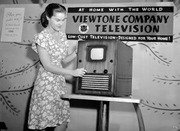🎭🎥𝑭𝙞𝒍𝙢 𝙉𝒐𝙞𝒓🎥🎭
Video Item Preview
Share or Embed This Item
🎭🎥𝑭𝙞𝒍𝙢 𝙉𝒐𝙞𝒓🎥🎭
Film Noir
🎬🎥🎭🎫🎭 🎥🎬
Film noir, style of filmmaking characterized by such elements as cynical heroes, stark lighting effects, frequent use of flashbacks, intricate plots, and an underlying existentialist philosophy. The genre was prevalent mostly in American crime dramas of the post-World War II era.
The golden age of film noir
Early examples of the noir style include dark, stylized detective films such as John Huston’s The Maltese Falcon (1941), Frank Tuttle’s This Gun for Hire (1942), Otto Preminger’s Laura (1944), and Edward Dmytryk’s Murder, My Sweet (1944). Banned in occupied countries during the war, these films became available throughout Europe beginning in 1946. French cineastes admired them for their cold, cynical characters and dark, brooding style, and they afforded the films effusive praise in French journals such as Cahiers du cinéma. French critics coined the term film noir in reference to the low-keyed lighting used to enhance these dramas stylistically—although the term would not become commonplace in international critical circles until the publication of the book Panorama du film noir americain (1955) by Raymond Borde and Étienne Chaumeton.
Alan Ladd and Veronica Lake in The Blue Dahlia (1946), directed by George Marshall and written by Raymond Chandler.(more)
The darkness of these films reflected the disenchantment of the times. Pessimism and disillusionment became increasingly present in the American psyche during the Great Depression of the 1930s and the world war that followed. After the war, factors such as an unstable peacetime economy, McCarthyism, and the looming threat of atomic warfare manifested themselves in a collective sense of uncertainty. The corrupt and claustrophobic world of film noir embodied these fears. Several examples of film noir, such as Dmytryk’s Cornered (1945), George Marshall’s The Blue Dahlia (1946), Robert Montgomery’s Ride the Pink Horse (1947), and John Cromwell’s Dead Reckoning (1947), share the common story line of a war veteran who returns home to find that the way of life for which he has been fighting no longer exists. In its place is the America of film noir: modernized, heartless, coldly efficient, and blasé about matters such as political corruption and organized crime.
Many of the major directors of film noir—such as Huston, Dmytryk, Cromwell, Orson Welles, and others—were American. However, other Hollywood directors renowned for a film noir style hailed from Europe, including Billy Wilder, Alfred Hitchcock, Jacques Tourneur, and Fritz Lang. It is said that the themes of noir attracted European directors, who often felt like outsiders within the Hollywood studio system. Such directors had been trained to emphasize cinematic style as much as acting and narrative in order to convey thought and emotion.
Defining the genre
Controversy exists as to whether film noir can be classified as a genre or subgenre, or if the term merely refers to stylistic elements common to various genres. Film noir does not have a thematic coherence: the term is most often applied to crime dramas, but certain westerns and comedies have been cited as examples of film noir by some critics. Even such sentimental comedy-dramas as Frank Capra’s It’s a Wonderful Life (1946) have been cited as “noir-ish” by critics who find in its suicidal hero and bleak depiction of small-town life a tone suitably dismal for film noir. Such films are also sometimes designated as “semi-noir,” or film gris (“gray film”), to indicate their hybrid status.
Other critics argue that film noir is but an arbitrary designation for a multitude of dissimilar black-and-white dramas of the late 1940s and early ’50s. Film scholar Chris Fujiwara contends that the makers of such films “didn’t think of them as ‘films noir’; they thought they were making crime films, thrillers, mysteries, and romantic melodramas. The nonexistence of ‘noir’ as a production category during the supposed heyday of noir obviously problematizes the history of the genre.” Yet it cannot be questioned that film noir connotes specific visual images and an aura of postwar cynicism in the minds of most film buffs. Indeed, several common characteristics connect most films defined as “noir.”
The isolation from society of the typical noir hero was underscored by the use of stark high-contrast lighting—the most notable visual feature of film noir. The shadowy noir style can be traced to the German Expressionist cinema of the silent era. Robert Wiene’s Das Kabinett des Doktor Caligari (1920; The Cabinet of Dr. Caligari) contains one of the best early examples of the lighting techniques used to inspire the genre. Wiene used visual elements to help define the title character’s madness, including tilted cameras to present skewed images and a dark atmosphere in which only the faces of the actors were visible. This Expressionistic style was later used by German directors such as Fritz Lang (Metropolis, 1927; M, 1931) and F.W. Murnau (Nosferatu, 1922; Sunrise, 1927).
Orson Welles in Citizen Kane (1941).
These lighting effects were used in Hollywood by cinematographers such as Gregg Toland (Citizen Kane, 1941), John F. Seitz (Double Indemnity, 1944), Karl Freund (Key Largo, 1948), and Sid Hickox (The Big Sleep, 1948) to heighten the sombre tone of films in the genre. Classic images of noir included rain-soaked streets in the early morning hours; street lamps with shimmering halos; flashing neon signs on seedy taverns, diners, and apartment buildings; and endless streams of cigarette smoke wafting in and out of shadows. Such images would lose their indelibility with realistic lighting or colour cinematography.
The inherent subjectivity of Expressionism is also evident in film noir’s use of narration and flashback. An omniscient, metaphor-spouting narrator (often the central character, a world-weary private eye) frequently clarifies a characteristically labyrinthine noir plot or offers a subjective, jaded point of view. In other films—such as Welles’s Citizen Kane and Wilder’s Double Indemnity and Sunset Boulevard (1950)—the denouement (often the death or downfall of the central character) is revealed in the opening scenes; flashbacks then tell of the circumstances that led to the tragic conclusion. Tension and suspense are increased by the use of all-knowing narrators and flashbacks, in that the audience is always cognizant of impending doom.
The noir hero
The heroes of noir generally share certain qualities, such as moral ambiguity, a fatalistic outlook, and alienation from society. They also exhibit an existential acceptance of random, arbitrary occurrences as being the determining factors in life. Although the “hard-boiled detective” is the stereotypical noir hero, the central male characters in film noir range from drifters (John Garfield in Tay Garnett’s The Postman Always Rings Twice, 1946) to college professors (Edward G. Robinson in Lang’s The Woman in the Window, 1944). The ethics that these characters espouse are often borne more of personal code than true concern for their fellow man. For example, Humphrey Bogart (the actor perhaps most associated with the genre) as private eye Sam Spade in The Maltese Falcon is emotionally indifferent to the murder of his partner and avenges his death primarily because “when one of your organization gets killed, it’s bad business to let the killer get away with it.” Such compassionless pragmatism is found in the most noble, as well as the most tarnished, of noir heroes. The weakest of such characters exhibit an abundance of tragic flaws, often including an uncontrollable lust for duplicitous women.
Noir women
Noir women are often characterized as femme fatales or “spider women”; in the words of one critic, they are “comfortable in the world of cheap dives, shadowy doorways, and mysterious settings.” Well aware of their sexual attractiveness, they cunningly and ruthlessly manipulate their male counterparts to gain power or wealth; for example, by conspiring to murder an aged, wheelchair-bound (i.e., impotent) spouse. A quintessential example of the noir temptress is Kathie Moffat, as portrayed by Jane Greer in Tourneur’s Out of the Past (1947). While flirting with Robert Mitchum’s character in a Mexican café, she describes a local night spot that she thinks would be to his liking. As she leaves the café, she turns to Mitchum and coyly says “I sometimes go there”—at which point, the viewer familiar with the noir genre knows that Mitchum is on a one-way path to destruction. Nevertheless, the women of film noir often evoke sympathy, as they are frequently victims of emotional or physical abuse, with such victimization providing impetus for their vengeance. They are trapped in passionless or violent marriages and resort to murder as a means of escape, usually destroying their conspiring paramours in the process.
Internet Archive is a NON-PROFIT 501 © (3) Web site. They get NO money from the Government. They depend totally on your donations. They do not sell advertizing.
All of the movies I have presented are for educational purposes and to preserve movie making & acting as an art form. Movies are a true form of art in storytelling that can be traced back to cavemen drawing pictures, in color, on cave walls. Making this art form available to the public goes back to chained libraries where a single book cost as much as a house. Find it in your heart to give what you can. THANK YOU!
- Addeddate
- 2024-04-14 20:01:13
- Collection_added
- television
- Color
- color
- Identifier
- 01-film-noir
- Reviews allowed
- none
- Scanner
- Internet Archive HTML5 Uploader 1.7.0
- Sound
- sound
- Year
- 1927
comment
Reviews
42,668 Views
607 Favorites
DOWNLOAD OPTIONS
IN COLLECTIONS
Unsorted Television Television
Television 
Uploaded by JT's_Ghost on
 Live Music
Archive
Live Music
Archive Librivox
Free Audio
Librivox
Free Audio Metropolitan Museum
Metropolitan Museum Cleveland
Museum of Art
Cleveland
Museum of Art Internet
Arcade
Internet
Arcade Console Living Room
Console Living Room Open Library
Open Library American
Libraries
American
Libraries TV News
TV News Understanding
9/11
Understanding
9/11